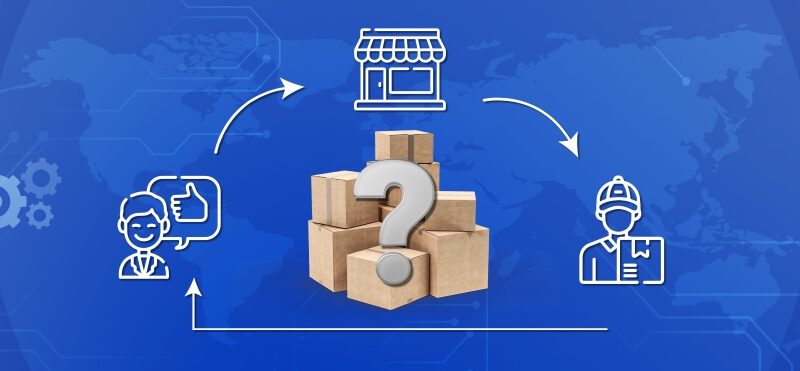Warehouses function in an increasingly competitive space. E-commerce, a key growth driver of third-party warehousing in recent years, is soaring. With so many options on the table, businesses have no qualms about switching to a different provider. So how do you give your warehouse the edge and keep your clients hooked? Attractive prices can be a compelling differentiator. If nothing else, you don’t want to price yourself out of the market.
But you can’t offer competitive pricing if you aren’t keeping warehouse costs low. In one survey, 9 in 10 warehouse operators reported they were actively implementing cost-cutting measures. Few things can have as large an impact on warehouse costs as automated processes do. Automation here encompasses everything from warehouse management software to automated storage and retrieval systems (ASRS).
Here are some reasons why warehouse automation leads to reducing costs.
1. Warehouse automation works to cut picking costs
Order picking is the single most expensive operation in a warehouse. It can account for over 55% of warehouse operational costs. Picking is labor-intensive and time-consuming. It involves more than just grabbing an item off a shelf or rack. Pickers can spend as much as 50% of their time traveling/walking through the warehouse.
In warehouses that depend on manual picking, workers are restricted to filling one order at a time. Restricted by paper lists, they may end up at the same warehouse section multiple times an hour or a day. This is an inefficient use of the picker’s time and energy.
When you deploy an automated picking and storage solution, you can take advantage of batch picking leading to reduced picking costs. Batch-picking groups orders containing a common item or theme. That way, you can fulfill multiple orders in one picking cycle and may grow throughput up to 15 times higher than manual picking.
Batch picking eliminates the bottleneck of waiting for the last item to complete an order. It can also prioritize orders based on inventory importance or availability.
2. Automating reduces mispick costs
The costs of picking errors (mispicks) are often multifaceted. It’s more than just the cost of picking and shipping the item to the customer. You have to factor the expenses around shipping the item back to the warehouse, processing it, and returning it to inventory. Add to that the cost of picking, packaging, and shipping the correct item. Then there’s the long-term financial impact of customer dissatisfaction and reputation loss. So mispicks are certainly expensive.
Most companies find that 95% to 98% order accuracy is sufficient for a successful business. Even though this percentage sounds high, it implies that the companies expect an error rate of 2% or worse. When you factor in all the costs involved, an error rate of 2% or more can add up quickly and inflict a significant dent in the overall warehouse profitability.
Warehouse automation minimizes human intervention, thus mitigating the risk of manual errors and tightening inventory control. Automated systems typically come with advanced picking mechanisms as well as real-time inventory tracking. You get pinpoint accuracy of an item’s location and the exact quantity required. This substantially increases picking precision. The result is a picking accuracy that is closer to 100%.
When you factor in the potential cost of a mispick, automated warehouse systems deliver significant cost savings. Long term, it improves customer satisfaction and retention. It encourages repeat purchases, which eventually improves revenue and profit margins.
3. Warehouse automation systems save floor space costs
According to Cushman and Wakefield, in the past 20 years, the average size of warehouses grew by more than 40%. This increase is directly caused by the increase in the e-commerce market.
What does this mean? The cost of leasing a warehouse is growing in tandem with the growing size. Worse, relocation is disruptive to the warehouse, clients, logistics providers, and customers. It’s predicted that the rent for warehouse and logistics space will grow by more than 15% over the next two years.
This is why, according to Techavio, the demand for smart warehouses equipped with IoT solutions will rise significantly.
The reason is simple – warehouses with automated storage and retrieval systems (ASRS) use 40% less floor space. You can tap into the building’s height by maximizing vertical storage through vertical lift modules (VLMs). With that, you reduce expenses of the floor space required per pallet and rack as well as the aisle room needed for access.
Automation may also enable the ability to maneuver tightly configured drawers, dividers, specialized holders, and totes. These features arrange and separate maximum possible items you can store in the system. Further, integrated inventory management solutions help organize and manage the space in real-time by keeping items packed on shelves as compact as possible.
The saved floor space can be repurposed for other revenue-generating operations such as order customization or enhanced quality control, all of which can have a positive impact on your bottom line.
4. Warehouse automation cost is ultimately less than the replaced labor costs
Labor takes up somewhere between 40-60% of a warehouse operating budget, and by the end of 2021, many operators reported yearly wage rises of above 11%! It doesn’t help that the total number of employees in the US warehousing and storage industry nearly doubled between 2016 and 2022. With warehouses increasingly packed with pallets, shelves and free-standing pieces, you could end up needing plenty of workers to navigate the maze.
Warehouse automation solutions mean your staff can work smarter and in fewer numbers. For instance, automation could bring the required item right to the employee’s workstation, or otherwise drastically reduce the time staff spent traveling from a pick spot to another pick spot. Even when workers have to walk to an item’s location, they’re armed with information on the item’s exact location as well as the pick quantity.
These perks optimize your workforce and increase productivity substantially compared to more manual methods. You’ll need only a smaller number of people to execute warehouse tasks. That way, you can cut down your workforce or reassign the extra warehouse staff to other duties or more strategic projects.
5. Automating cuts injury and absence costs
The more movement and manual processes your workers are involved in across the warehouse, the greater the risk of injury. Staff may routinely be required to stretch, bend, twist, push, pull or jump to reach items that are in less than convenient locations. This gradually leads to slips and falls as well as injury from improperly stacked items toppling from height. According to the U.S. Bureau of Labor Statistics, the transport and warehousing industry has the second highest number and rate of fatal work injuries in the US.
Several direct and indirect expenses accompany worker injury:
- Workers’ compensation claims and the costs of resolving compensation claims;
- Higher insurance premiums due to the elevated risk of injury;
- Losses from worker absenteeism and any costs incurred finding a stand-in;
- Poor safety record that places your warehouse in the crosshairs of local authorities and industry regulators;
- Difficulty in attracting and retaining great employees due to the hazardous work environment.
Automated warehouse systems reduce manual intervention, which eliminates or drastically reduces the distances and heights workers have to cover to process orders. Staff is less fatigued and thus less prone to making mistakes.
When warehouse employees do have to pick items, automation ensures this occurs within the ‘golden zone’ – that is, shelving that’s between waist height and shoulder height for the average person. Within this zone, you can grab or move items without bending, stretching, climbing or another strenuous picking movement. It reduces the risk of worker injury.
Further employee-protecting safeguards in automated warehouses include emergency stop buttons, light curtains, presence-sensitive safety mats, and more.
Conclusion
The more you automate warehouse operations, the more you lower costs. But automation has significant upfront costs for the software applications, the new equipment, the hiring of expert staff, and the rewriting of operating procedures. So you have to automate within a budget that is cognizant of the financial constraints of your warehouse.
The good news is that automation is a spectrum. You can start small and steadily replace manual tasks over time. Develop a plan with short-, medium- and long-term automation goals. Attend to the low-hanging fruit and work your way up to automating the more difficult processes, and progressively save more.

.png)



Impressive! Thanks for sharing this.
You’re doing a fantastic process Man, Keep it up.